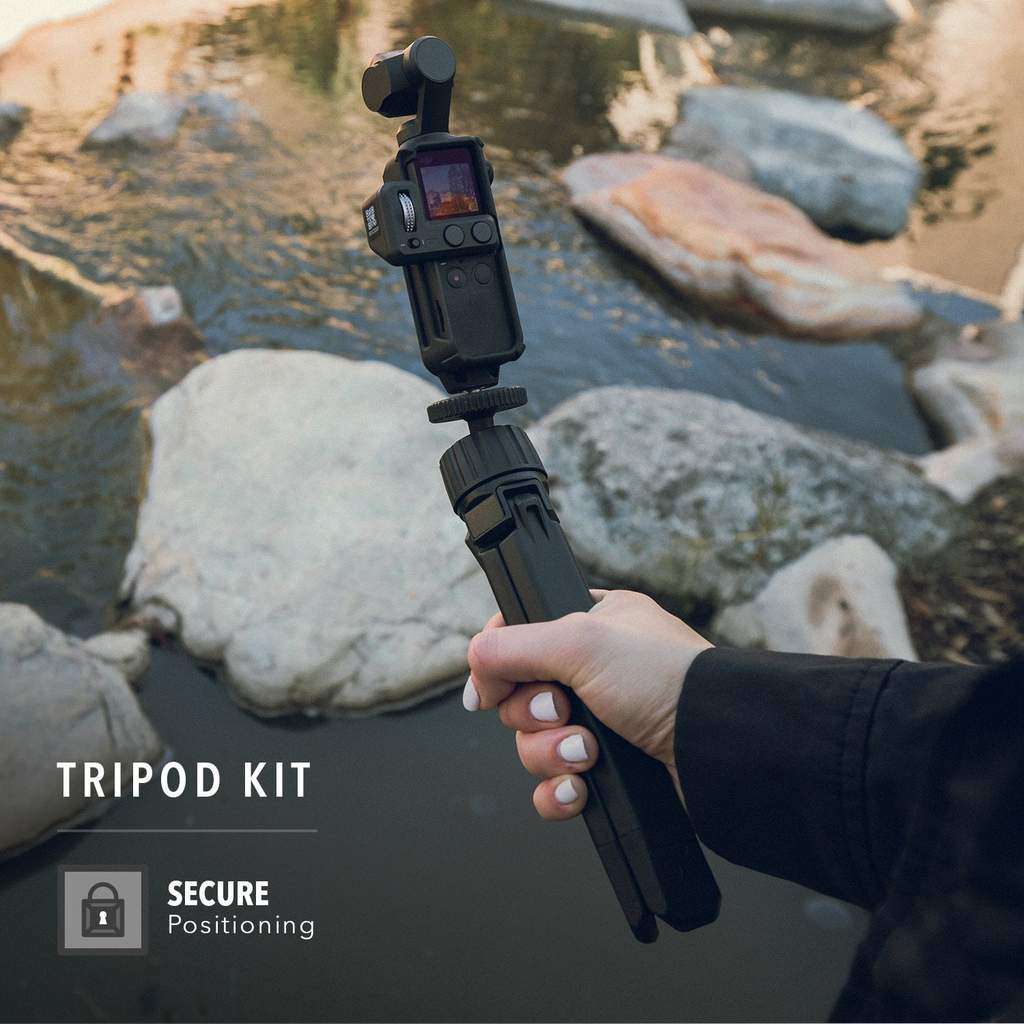

The next huge difference is the quality and focal length.
Dji osmo pocket 360 vr photo Bluetooth#
In my opinion, the Pocket 2 should have at least Bluetooth and WiFi added to the base camera without the need for accessories, but this can also be nice for some users to save some money if they won’t be using the camera with the Mimo app and need the mic jack the handle provides.


The One X2 base camera is more expensive but has wifi and Bluetooth built-in. The do it all handle for the Pocket 2 allows you to control the camera remotely, but that’s an additional purchase. Both cameras have apps and can shoot photos, videos, and time-lapses. The app has auto-tracking and can do much of the editing for you, but that’s something to keep in mind.

There is some level of editing that needs to happen with 360 videos. The Insta360 app on your phone or computer allows you to reframe, track, zoom, stabilize and do some effects to your footage, but in general, you cant share your 360 footage straight out of the camera. It sounds basic to mention that, but if you’ve never used a 360 camera before, this is something you’ll have to get used to. The One X2’s framing is done in the edit, while the Pocket 2 is more of a traditional camera as in what you film is what you get. This is a huge dynamic shift when using these two cameras. The One X2 films everything around it, while the Pocket 2 only films what’s directly in front of the lens. The first major difference between these cameras is the way they film. The accessories that these kits provide you with make your filming life much easier with both of these cameras. I’ll be comparing the cameras in this article, but for what it’s worth - I think it’s worth buying a kit for both of these cameras. The Pocket 2 camera only retails for 350 or 500 for the creator kit. A kit will cost between 460 and 570 dollars, depending on the kit. The camera must be set to Auto Focus mode.First things first, when it comes to price, the One X2 retails for $430 USD for just the camera. Long Press anywhere on the video preview to trigger autofocus at that location (Z3/X5 only).When Metering Mode: Spot is selected, touch anywhere on the video preview to set the metering spot at that location.Double tap to reset the gimbal position.Touch and drag on the video preview to control the gimbal's pitch/yaw.For Android, tap on the exposure info panel at the top of the video preview. Litchi includes grid lines, a histogram and all camera and exposure settings.Įxposure settings can be found in the camera settings on iOS. Save up to 5 Motion Control presets, which can then be accessed easily at any time using the presets button in the left button bar. To get the best results, use the "Optimize Start/End for duration" button which will automatically adjust the end angles. In Record mode, the maximum duration depends on the start/end positions.We recommend stabilizing the timelapse in post using Warp Stabilizer VFX. In Timelapse mode, the maximum duration is 5 hours and the minimum interval is 2sec for JPEG and 10sec for RAW.Once Motion Control starts, Litchi will smoothly transition from the start position to the end positionĪnd, depending on the selected mode, take photos at the preset interval (Timelapse) or record video (Record). Set the start and end gimbal positions along with a duration for the move. Motion Control can be used to start controlled movements over a predefined period of time, ideal for smooth video recording and Motion Timelapses. Once the shooting is complete, you will find the photos on Osmo's sdcard, extract them and stitch them using your favorite panorama stitching tool ( Autopano, PTGui or other). Other camera/lens combos may require different settings. With the X3 camera, we recommend using 4 rows and 8 photos per row for a 360° spherical panorama.
Dji osmo pocket 360 vr photo full#
Litchi will shoot a row at +30° below horizon, then divide the full pitch range (120°) equally by the number of rows.Īt the end, it will take 2 additional zenith pictures (not counted in the number of rows). Select the number of rows and photos per row and let Litchi handle the capture (Single/AEB/HDR are supported). Shoot Spherical/Horizontal 360° Panoramas with ease


 0 kommentar(er)
0 kommentar(er)
